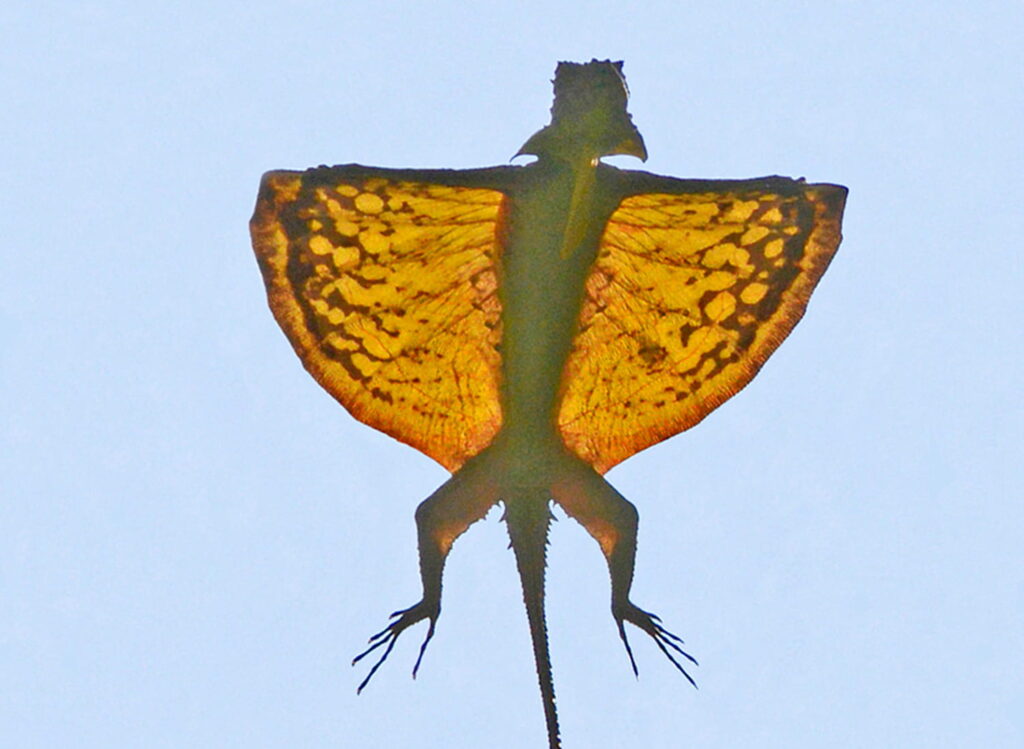Agamid lizards of the genus Draco are also referred to as flying lizards, flying dragons, or gliding lizards. They have membranes that can be expanded to form wings (patagia), which are made of an enlarged set of ribs. They are insectivores of trees.
Despite being incapable of powered flight, they frequently experience lift during their gliding flights. One lizard can glide for up to 60 meters (200 feet), losing only 10 meters (33 feet) of height in the process. This is a significant distance given that one lizard is only about 20 cm (7.9 in) long overall, tail included. They are fairly prevalent in woods, areca gardens, teak plantations, and other natural areas throughout Southeast Asia and southern India.

Are flying lizards poisonous?
The flying lizard is not eaten by humans. Many Filipinos mistakenly assume that this species is poisonous, despite the fact that this is not (Taylor, 1966). Thus, the only advantage is the aesthetic enjoyment of watching a lizard species with such vibrant colors take flight.

How long do flying lizards live for?
This type of lizard can live up to eight years.

Can lizards see humans?
They can see equally as well as, if not better than, humans in most situations! The eyes of lizards are able to perceive colours that humans cannot, and they can easily focus on both close-up and distant objects.
Also Read – Dogs And Wolfs Are Closely Related, But Their Sleep Patterns Are Very Diffrent
Where can we discover lizards that fly?
An illustration for Hamburg Airborne Lizard
Ants and termites make up practically the whole diet of flying dragons. The lizards can be found in heavily forested areas in Southern India, the Philippines, Borneo, and Southeast Asia. They have no particular status for conservation and are common throughout their range.
Where do lizards go at night?
Most lizards slept on leaves, with their heads directed towards the potential path of a predator approaching from the plant base. There was no inter-specific competition in the choices of sleeping perches.



